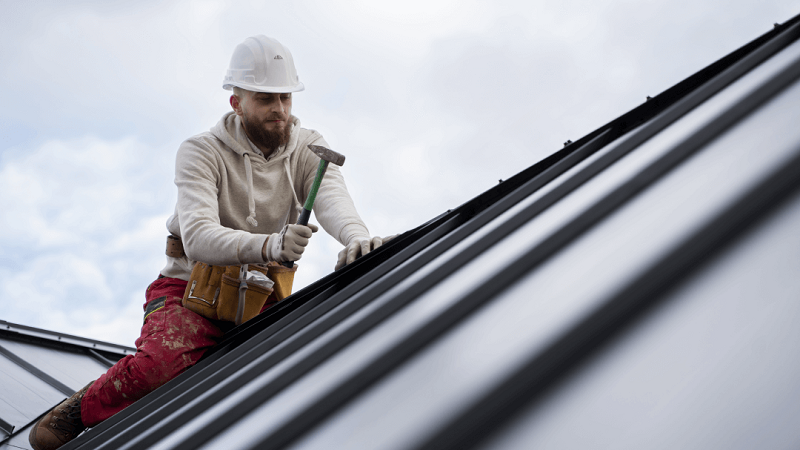As a homeowner, your roof is your first line of defense against the elements. But with so many options and potential problems, it can be overwhelming. This ultimate guide to roofing covers everything you need to know, from materials and maintenance to repairs and replacement, to keep your home safe and secure.
What’s Your Roof Made Of?
There are a bunch of different materials out there, and each one has its own pros and cons.
Asphalt Shingles These are super common. They’re affordable and come in lots of colors. Plus, they’re pretty easy to install. But they don’t last as long as some other options.
Metal Roofing This stuff is tough! It can handle all sorts of weather and lasts a really long time. It’s a bit pricier upfront, but it might save you money in the long run.
Tile Roofing Tiles look fancy and can really make your house stand out. They’re great in hot climates and last a long time. But they’re heavy, so your house needs to be strong enough to hold them up.
Wood Shakes These give your house a natural, rustic look. They’re eco-friendly too! But they need more care than other types of roofs.
How Long Will Your Roof Last?
Now, you’re probably wondering how long your roof will stick around. Well, it depends on what it’s made of:
- Asphalt shingles: 20-30 years
- Metal: 40-70 years
- Tile: 50+ years
- Wood shakes: 30-40 years
But remember, these are just estimates. How long your roof lasts depends on a lot of things, like the weather where you live and how well you take care of it.
Taking Care of Your Roof
Speaking of taking care of your roof, let’s talk about maintenance. It’s not the most exciting thing, but it’s super important if you want your roof to last.
Keep It Clean Your roof can get pretty dirty. Leaves, branches, and other stuff can pile up. This can trap moisture and lead to damage. So, grab a broom or a leaf blower and give your roof a good clean every now and then.
Check Your Gutters Clogged gutters are bad news for your roof. When water can’t flow away properly, it can back up and cause all sorts of problems. Clean your gutters at least twice a year – more if you’ve got lots of trees around.
Look for Damage Take a walk around your house and look up at your roof regularly. Keep an eye out for missing or damaged shingles, rusty spots on metal roofs, or any other signs of wear and tear.
Trim Those Trees Trees are great, but not when their branches are scratching up your roof. Keep tree limbs trimmed back to prevent damage.
When to Call in the Pros
Sometimes, you need to call in a roofing company to handle things. Here’s when you should pick up the phone:
- After a big storm: High winds and hail can do a number on your roof.
- If you see water stains on your ceiling: This could mean you’ve got a leak.
- When your roof is getting old: As your roof nears the end of its lifespan, it’s a good idea to have it checked out.
- If you see daylight through your roof boards: This is a big red flag!
Common Roofing Problems
Even if you take great care of your roof, problems can still pop up. Here are some common issues to watch out for:
Leaks Water getting into your house is never good. Leaks can cause all sorts of damage, from stained ceilings to mold growth.
Missing or Damaged Shingles Strong winds can blow shingles right off your roof. And over time, shingles can crack or curl up at the edges.
Ice Dams If you live somewhere cold, watch out for ice dams. These form when snow melts and then refreezes at the edge of your roof. They can cause water to back up under your shingles.
Ponding Water This is a problem for flat roofs. If water sits on your roof for more than 48 hours after it rains, it can lead to leaks and other damage.
Roofing Costs: What to Expect
Roofing work isn’t cheap, but it’s an important investment in your home. Here’s a rough idea of what you might pay:
- Repairs: Can range from a few hundred to a few thousand dollars, depending on the problem.
- New roof: Anywhere from $5,000 to $30,000 or more, depending on the size of your roof and the materials used.
Remember, the cheapest option isn’t always the best. Sometimes it’s worth paying a bit more for quality materials and workmanship.
DIY Roofing: What You Can (and Can’t) Do
While it’s best to leave most roofing work to the pros, there are a few things you can do yourself:
- Clean your gutters
- Remove debris from your roof
- Inspect your roof from the ground
- Check for leaks in your attic
But remember, getting up on your roof can be dangerous. Leave the big stuff to the professionals.
Wrapping It Up
Now, you need to take great care of your roof. Remember, your roof works hard to protect your home, so it’s worth giving it some TLC. And when in doubt, don’t hesitate to call in a professional roofing company. They’ve got the skills and experience to keep your roof in tip-top shape. Here’s to many years of having a great roof over your head!
